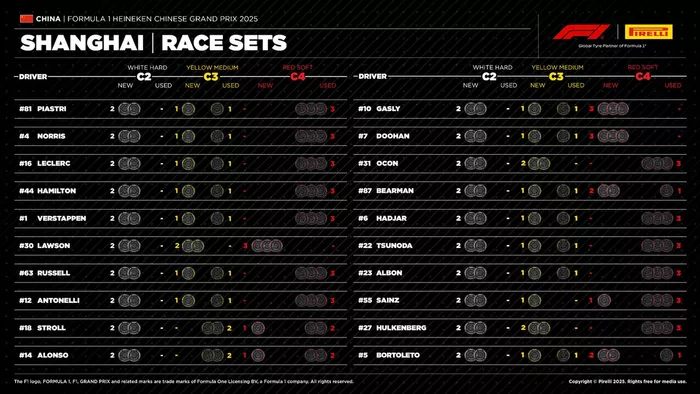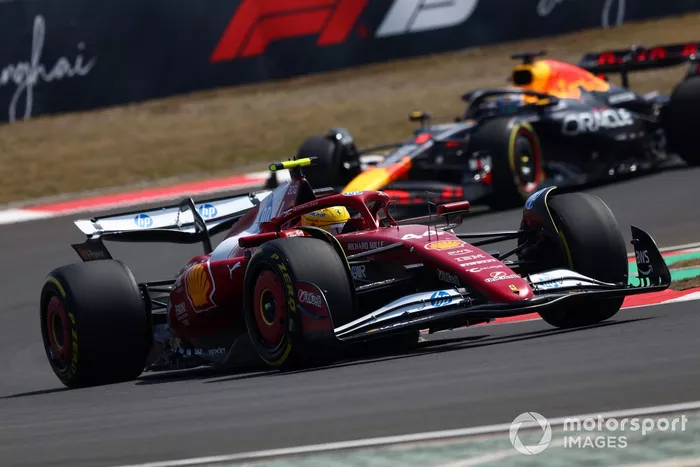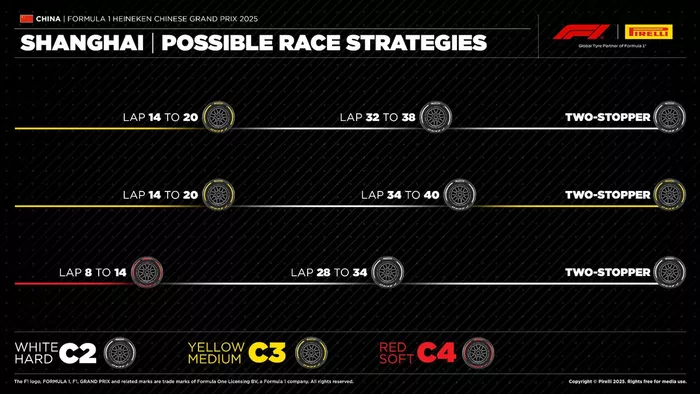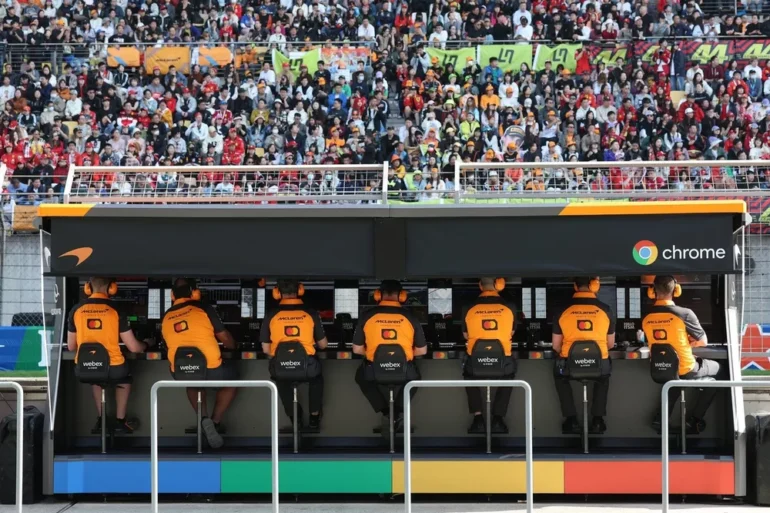After a wet Australian Grand Prix, the dry conditions at Shanghai were expected to make the race more predictable. However, Saturday morning’s sprint race has shown that tyre management will be anything but simple.
Managing Graining
One of the key terms that has emerged throughout the weekend is “graining.” This occurs when the surface of the tyre becomes hotter than the underlying carcass, often due to sudden stress on tyres that haven’t reached their ideal temperature yet. This causes small pieces of rubber to break off and stick to the surface, reducing the contact patch with the track. While graining can settle down over the course of a stint, it severely reduces grip whenever it occurs, making it critical for teams to manage it carefully.

Graining will likely be the primary challenge at Shanghai, a track known for its long, demanding corners that put heavy strain on the tyres, followed by long straights where they cool down. Shanghai is particularly tough on the front tyres, which take the brunt of the work. The first corner complex, which features a 270-degree turn, is especially hard on the front-left tyre, a crucial element for a fast lap. The track has been recently resurfaced and offers a lot of grip, setting new qualifying records, but at the start of the weekend, the lack of rubber on the surface exacerbated the graining effect.
Some cars are naturally better at handling graining than others, but much of it comes down to the car’s setup. A key example during the 19-lap sprint race was Lando Norris, who suffered from early front graining due to a poor setup choice from his team. Max Verstappen in the Red Bull also struggled with the issue, allowing Norris’ teammate, Oscar Piastri, to pass him for second. With the opportunity to adjust setups after the sprint, it will be interesting to see which teams have managed to find the right balance for the race.
Avoiding the Dirty Air
Graining becomes even harder to manage when drivers are stuck in dirty air, as the loss of downforce behind another car causes additional sliding and shearing of the tyres. This was a key factor in Lando Norris’s struggles, and also played a role in Lewis Hamilton’s dominant sprint victory. Hamilton, starting from pole, had clear air throughout the race, which allowed him to preserve his tyres better than Verstappen and Piastri, who were fighting in traffic.
McLaren team principal Andrea Stella commented on this: “Definitely, we need to improve in the long run. With Lando, we saw a lot of graining, and he couldn’t make much progress during the sprint, whereas Oscar had an easier time managing the tyres. But Oscar also had less dirty air, which played a role too.”

This makes getting a good start tomorrow even more important. Piastri, after claiming his first pole position, will be in a prime position if he can hold onto the lead into Turn 1. Keeping clear air could give him a crucial advantage. We could also see drivers adopt off-strategy tactics to escape the train of cars, with the undercut (pitting just before direct rivals) becoming a key option, especially when tyre degradation is high, as the benefit of new tyres will be more significant.
How Many Pit Stops?
The sprint race offered a glimpse of what we might see on Sunday, but its lack of pitstops made it a relatively uneventful affair. However, with the introduction of undercutting strategies, the main race is expected to be much more dynamic. Due to the high tyre degradation, there’s less strategic flexibility than teams might have hoped for if they want to complete the race on the fastest possible strategy. All 10 teams have reserved their two sets of hard tyres for the race, a crucial decision in light of Pirelli’s recommended two-stop strategy.
Pirelli’s motorsport chief, Mario Isola, said: “From what we saw in the sprint, front-left graining is still a problem, and the wear on the medium tyres after 19 laps was quite high. For some teams, it was right on the limit, which is why we believe a two-stop strategy is the way to go: medium-hard-hard.”

A three-stop strategy is also a possibility, but Pirelli’s Mario Isola believes the improving track conditions will make graining less of an issue on Sunday compared to the sprint race. “To be honest, I don’t think a three-stop strategy is likely. Considering the track is improving and the graining issue will be less severe, a two-stop strategy is feasible,” Isola explained. He also mentioned that starting from the back could open up some alternative strategies, such as beginning on hard tyres and saving mediums for the final stint. With a lighter car in the latter stages, it would be easier to generate less graining and allow for a more aggressive push. The soft tyres, however, are not considered a viable option.
The key to managing the current generation of tyres effectively is to bring them up to temperature gradually and avoid overdriving from Lap 1. While that sounds simple in theory, it’s more challenging in practice, especially in the intense battle for position during the opening laps. Isola emphasized that not overworking the front-left tyre, particularly through the demanding Turn 1 complex, could pay off later in the race.
“I believe it’s more about looking after the front-left in the first couple of laps,” he said. “There’s a long straight, followed by a 270-degree turn that immediately stresses the front-left tyre when it’s still not at the optimal temperature and pressure. If you don’t manage this carefully, you can start generating graining. If you get it right, then a two-stop strategy will be achievable.”
The question now is who has made the best setup adjustments after the sprint race to improve tyre wear. What’s becoming clear from Hamilton’s first sprint win with Ferrari is that the Chinese Grand Prix is very much a race where track position is crucial. Following Norris’ win in Australia, Piastri, as a first-time pole sitter, now has a golden opportunity to challenge his teammate and make a strong statement in the race.

